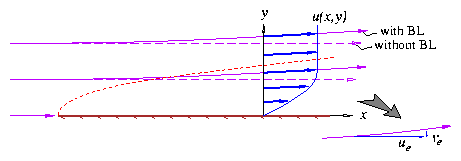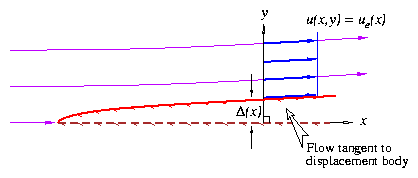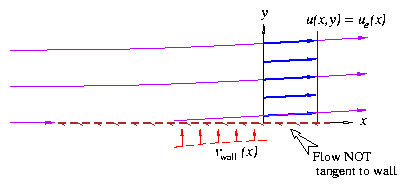
Asymptotic analysis of the Viscous Aerodynamic Problem indicates that the boundary layer perturbs the potential flow via the displacement effect by an amount which is O(Re-1/2). This perturbation may be important when high prediction accuracy is required for aerodynamic quantities such as lift and drag. For separated flow the perturbation to the potential flow can be O(1), and accounting for the perturbation is essential.
Two common methods are formualted here to modify the potential flow problem to account for the boundary layer's presence. Each method is constructed so as to match the vertical velocity ve of the actual flow just outside the viscous region.
The actual flow situation is shown in Figure .

The vertical velocity at some location ye is computed in terms of the mass defect gradient via the continuity equation.
| |||||||||||||||||||||||||||||||||||||||||||||||||||||||||||||||||||
This model employ the concept of a fictitious displacement body, which is offset from the actual body by a distance D(x).

The displacement body is assumed to have a purely potential flow tangent to it. The resulting ve in this situation is again computed using the continuity equation.
| ||||||||||||||||||||||||||||||||||||||||||||||
|
This model employs the actual body shape, but defines a fictitious wall blowing distribution vwall(x).

The flow is assumed to be purely potential, but it is not tangent to the actual body because of vwall(x) ¹ 0. The resulting ve at some distance above the wall follows from continuity.
| |||||||||||||||||||||||||||||||
|